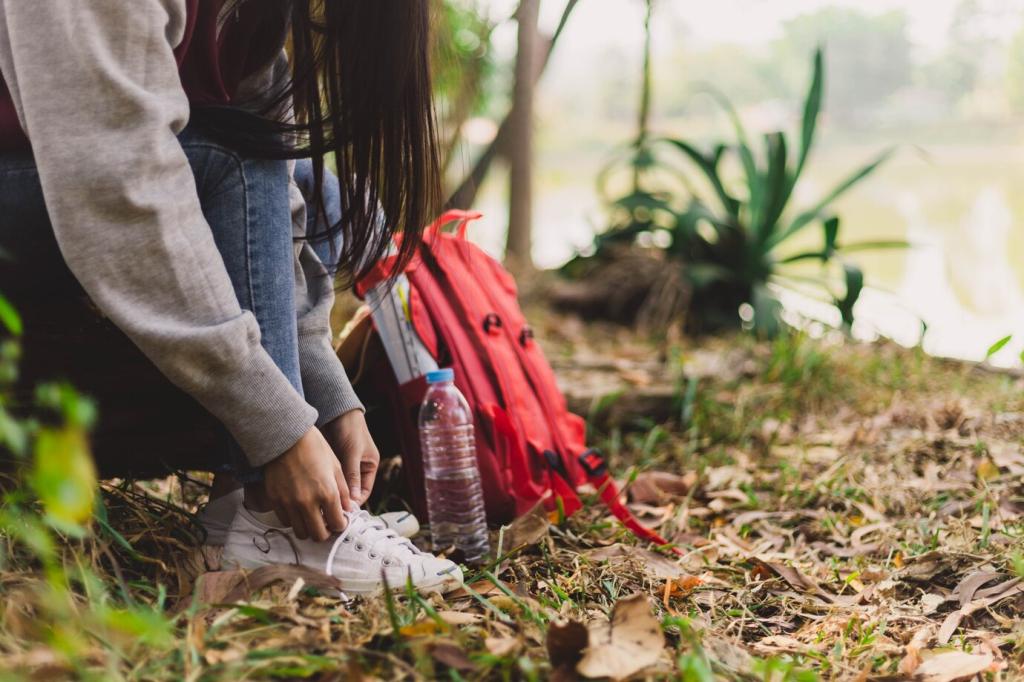Footwear Foundations That Carry You Further
Sturdy boots offer ankle support on rocky routes and heavy loads, while trail runners shine on well-groomed paths with faster, lighter strides. Consider terrain, pack weight, weather, and personal comfort before choosing. Try both on with your typical hiking socks.
Footwear Foundations That Carry You Further
Merino or synthetic socks wick sweat and help regulate temperature, while thin liners reduce friction on long climbs. Carry leukotape and treat hot spots immediately. A tiny blister kit can save a weekend—your future self will thank you on day two.


